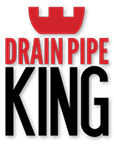No dig pipe relining
New technology has allowed plumbers to offer their customers a ‘no dig’ solution to sewerage and stormwater pipe problems. Prior to this, pipes needed to be dug up which is extremely costly in both time and money. With pipe relining, landscaping and concrete
driveways are able to remain untouched.
How pipe relining works
Pipe relining is essentially placing a new pipe inside the old damaged one. Whole networks or small sections of the pipe work,
depending on the tree root invasion, can be easily fixed with minimal disruption.
The initial assessment process to determine if pipe relining is suitable firstly involves cleaning the area to be relined with a high
pressure water jetter to clean out any tree roots and debris. The drain camera is then inserted to assess the extent of the pipe
damage and determine if the pipe can be relined. Once the plumber has this information, they are able to understand where the problem areas are to provide a quote and then they can begin the reline process. Whole sections of pipe up to 70m long are able to be relined.
- A flexible fabric liner is cut to size depending on how large the reline area is
- The liner is then impregnated with resin and placed on a long rubber tube with an air hose attached.
- It is inserted into the pipe and then pulled into place using ropes or pushed in using push rods. During this time, a camera is also in the line to ensure the liner is placed correctly.
- Once correct placement has been established, the air hose is used to inflate the long rubber tube, expanding the liner to its full size inside the pipe.
- The resin coated liner is then left to cure for anywhere between 1.5 hours to 6 hours.
- Once the resin is cured, the rubber tube is then deflated and removed leaving behind the new seamless pipe inside the old
broken one. - The camera is reinserted to view works and ensure success.
- If required, the liner is trimmed up or junction branches reopened by a robotic cutter.
Advantages of no dig pipe relining
- With the dig up method, tree roots will be able to make their way back into a pipe through the flexible joining pipe between the new and old pipe. Tree roots are unable to penetrate pipework once a section has been relined.
- Not only is it quicker and more convenient than the traditional ‘dig up’ method, it is also a much smoother finish, making it a
fantastic alternative. - It is minimal disruption, taking up less time and money than more traditional methods.
If you were to dig up a pipe under a bathroom floor for example, you would need to have the tiles and concrete cut up. This would
require fixtures to be removed and jackhammering through the floor to get to the pipe. It may be a small section or the whole
bathroom floor, depending on the extent of pipe needing replacement. Walls would need to be taped up so no damage is caused. Then the actual repair would need to be carried out and the floor re-concreted and re-tiled. In total this process may take up to two weeks, maybe more. Not being able to use the bathroom for two weeks is not ideal.
Relining takes a day or less to complete and can be done with minimal fuss and mess, not to mention the savings on
labour costs!
We also do pipe relining in Brisbane

